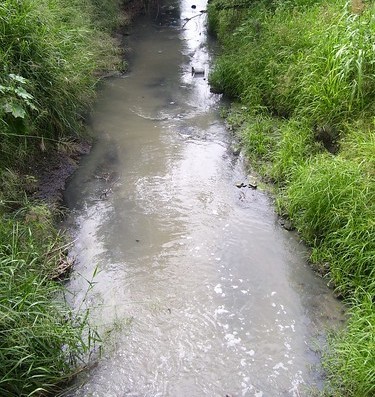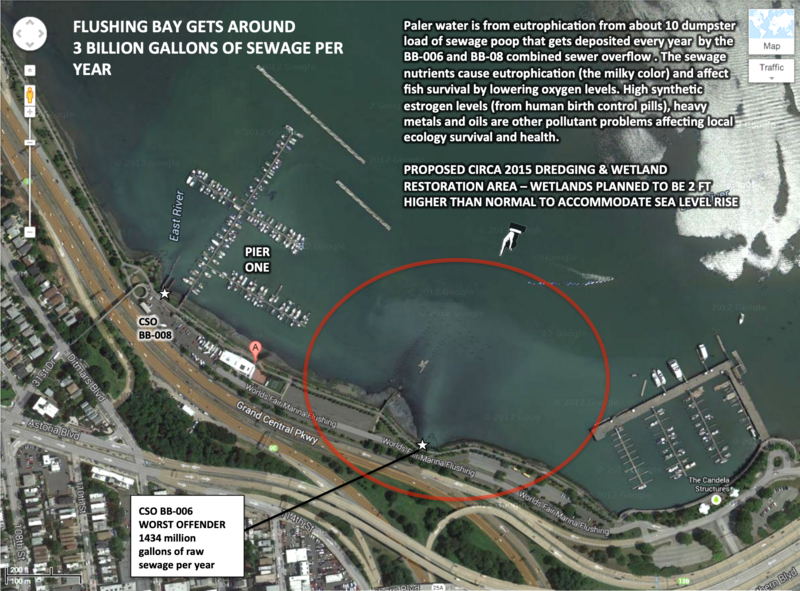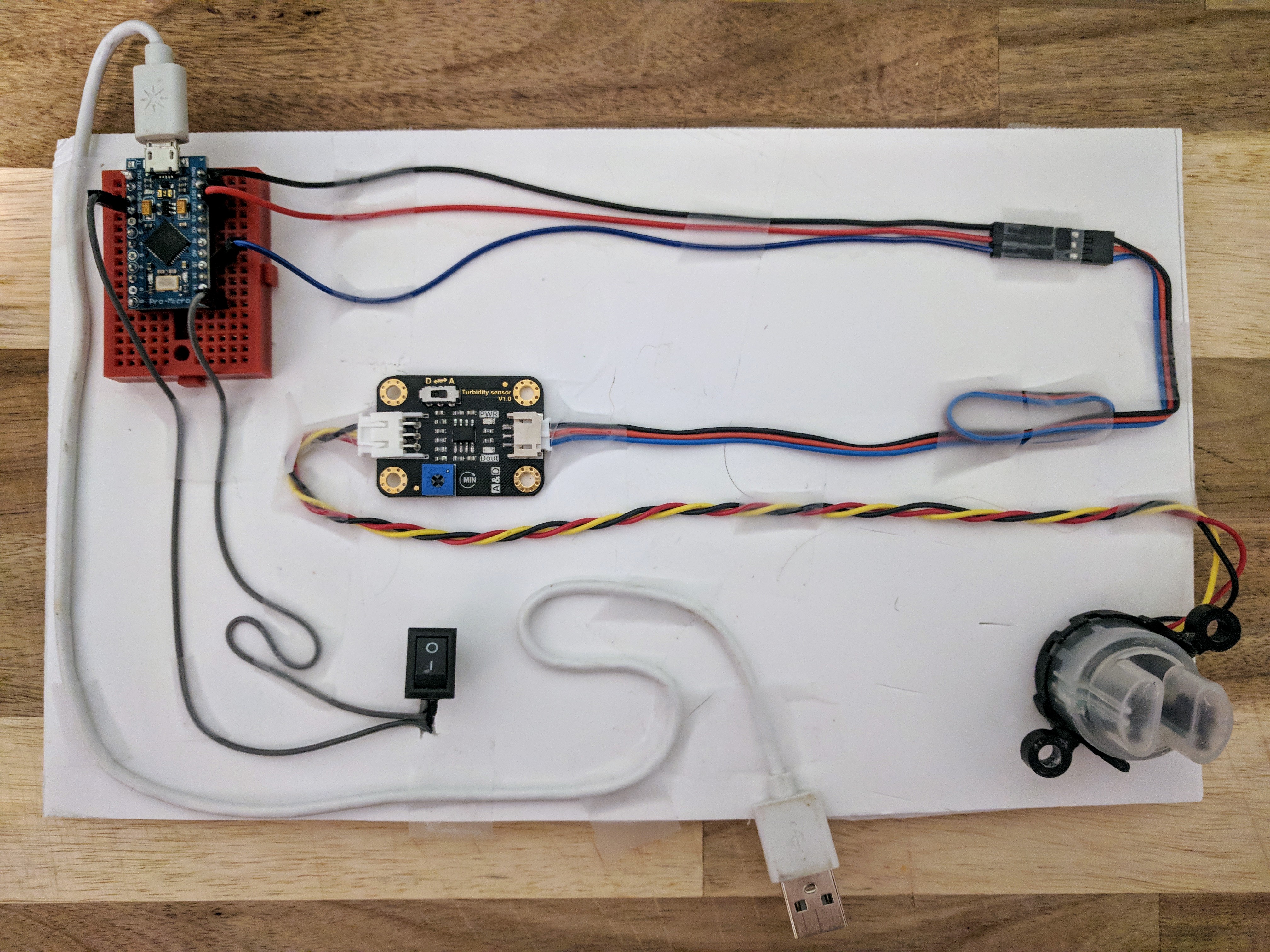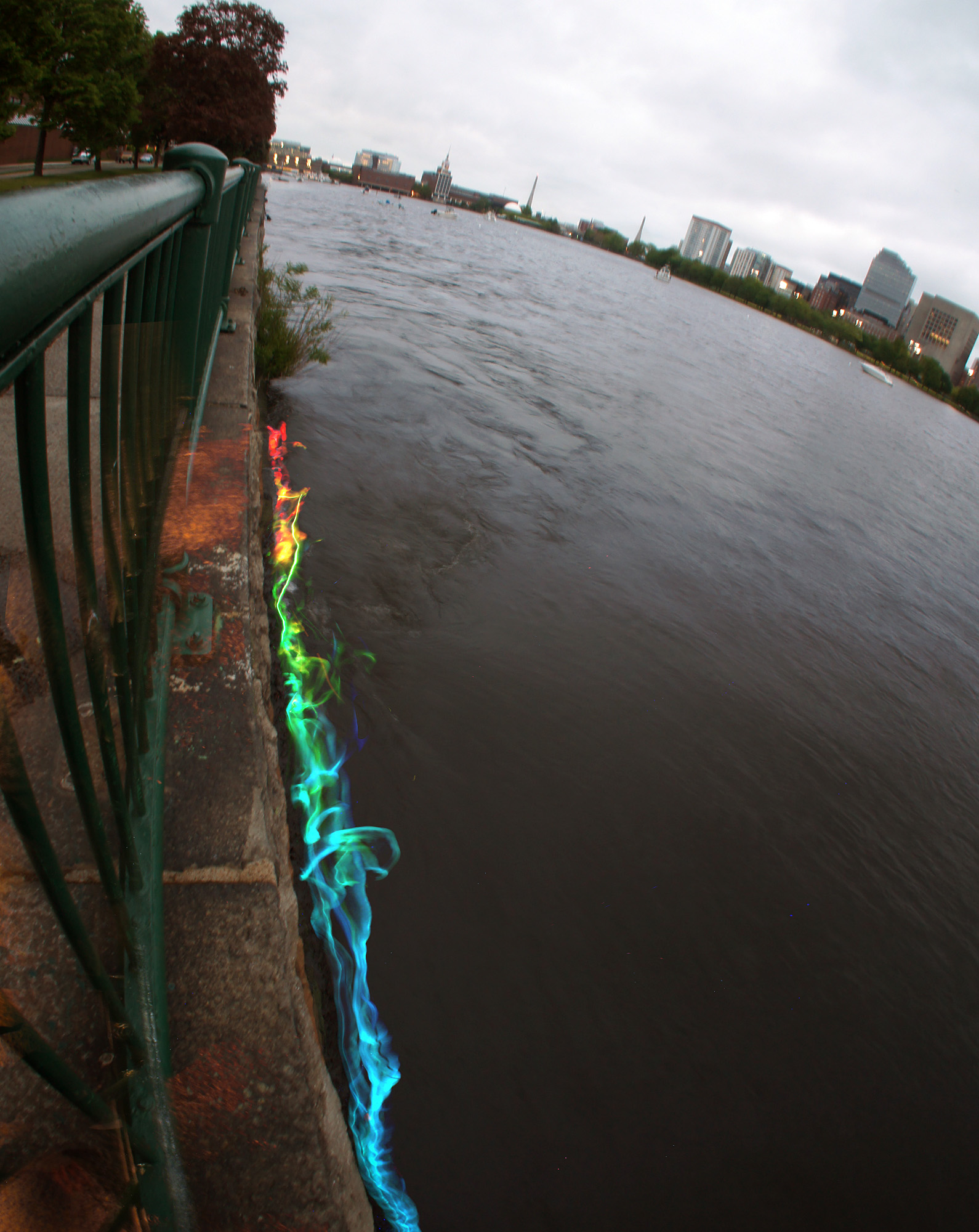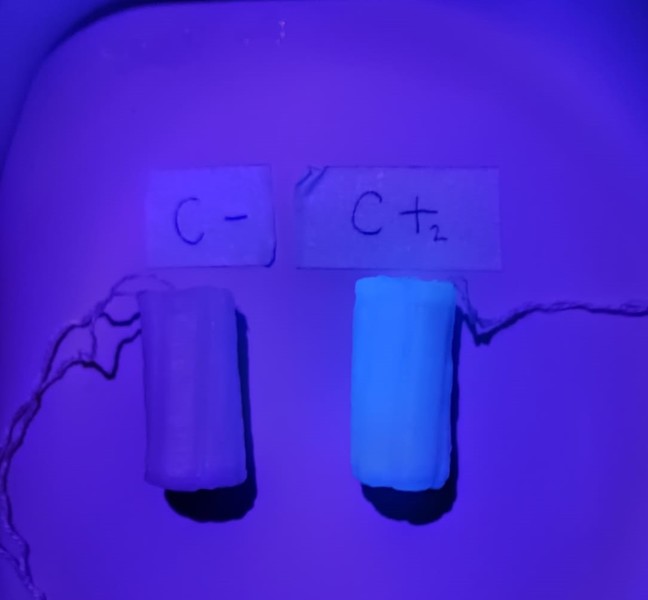Revisions for Detecting wastewater pollution
| 2 CURRENT | bhamster |
September 27, 2021 18:44
| about 3 years ago
Lead image: Along the Suquía River in Córdoba, Argentina. From this comment by @alejobonifacio, CC BY SA Wastewater is “used water” that’s created by households, cities, and industry. It ranges from sewage to surface runoff that can flow from roadways into storm drains. Untreated or under-treated wastewater can contain a variety of pollutants that can harm people and ecosystems when it’s released into the environment. On this page, we’re collecting information on some of the clues that might indicate wastewater pollution in the environment, and ways to investigate them. Some methods assess general water quality conditions that can correlate with wastewater pollution, while other methods can more directly signal the presence of wastewater by identifying specific pollutants.
What’s on this page:
Detecting possible wastewater pollutionThere’s lots of information (in English and Spanish) about what to look for in the comments of this question: What are some observable tell-tale signs of wastewater pollution?
Some water quality characteristics you can investigate:
If you’ve tried any of the approaches below to detect or document wastewater, please share your experiences and post a research note! Also help to improve this wiki page by editing it! Change in water color or clarity
Why? Solid particles, chemicals, or microscopic organisms in wastewater can give it a color or cloudy appearance. When wastewater is discharged into the environment, you might see a discolored plume in a river or a colored residue on land.
Cloudy looking stream water, Sustainable Sanitation Alliance, CC BY METHODS: Documenting visual changes in water color or clarity[notes:grid:wastewater-color]
Satellite image showing discolored, cloudy water in the Gowanus Canal. From this slideshow by @eymund. Documenting changes in water color/clarity with spectral imagery (might not be visible to human eyes)
Visible and near-infrared photos composited to reveal a plume of flowing sewage scum, originally from this note by @liz. Measuring turbidity of waterSolid particles floating throughout the water (called suspended solids) increase its turbidity. Learn more about turbidity in this research note from @anngneal.
Left: Secchi disk for measuring turbidity, from this note by @anngneal. Right: Simple turbidity sensor prototype, from this note by wmacfarl. Activities on [activities:turbidity] Odor
Why? Clean water should have no smell or a slightly earthy smell. Other smells could indicate under-treated wastewater.
See this comment from @jesseslone about odors near wastewater discharge areas and what they might indicate. METHODS Methods and activities related to odor logging can be found here: https://publiclab.org/methods#odor Activities on [activities:odor] Changes in water temperature
Why? Wastewater can be warmer than the waterbodies it’s dumped into. This includes sewage and wastewater produced from industrial processes.
METHODS Thermal fishing bobSense changes in water temperature and display temperature differences with colored lights in the field. Take a long-exposure photograph to record the results!
A long-exposure photograph of colored lights on a thermal fishing bob towed in the Charles River, Boston. The different colors indicate differences in water temperature near a power plant, which releases heated wastewater into the river. From this note by @Sara.
Activities on [activities:thermal-fishing-bob] Thermal photography
Activities on [activities:thermal-photography] Conductivity
Why? Water that has more inorganic solids dissolved in it (like salts or chemical pollutants) generally conducts electricity better---it has a higher conductivity
For example, salty wastewater (brine) associated with fracking can cause a spike in water conductivity (source: FracTracker). Organic pollutants like oil, however, don’t generally conduct electricity well and may lower the conductivity of water.
METHODS https://publiclab.org/methods#conductivity Two examples:
Indicator chemicals or components
Why? The presence of certain chemicals or living things in water can suggest pollution from wastewater.
METHODS Detecting optical brighteners[notes:wastewater-optical-brighteners]
UV light makes a tampon exposed to optical brighteners glow brightly. In the positive control on the right, the tampon was soaked in laundry detergent. From this note by @alejobonifacio. Organic waste and oxygenCertain bacteria help to clean water by breaking down organic wastes, and they use oxygen in the process. Measuring the amount of oxygen in water and how readily it might be used can help create a picture of how much organic waste is present and how well it’s breaking down. [notes:wastewater-organic-matter] Do-it-yourself dissolved oxygen (DO) and oxidation-reduction potential (ORP) sensor for monitoring a small wastewater treatment system. From this note by @jesseslone. There are also ways to use spectroscopy to detect organic matter (see below) Bioindicators and bioassaysUsing living things to help indicate or measure impacts from polluted water. Changes in the survival or growth of certain plants, animals, and microorganisms in water can indicate worsening water quality. image to come here!
Activities on [activities:bioindicators] Spectrometry methods for wastewater: a grab bagLots of people at Public Lab are interested in spectrometry and have experience using spectrometers for environmental monitoring. We’re collecting some approaches for detecting various things related to wastewater here:
Some emerging research:
Some preliminary results showing the fluorescence signals of sewage vs. surface water, from Using optical sensors to detect sewage contamination in the Great Lakes:
Different fluorescence signals from sewage and stream samples measured using a laboratory-based instrument. Public domain image from this USGS project.
Could a DIY spectrometer or fluorometer be used for detecting optical signals of sewage with an appropriate light source for excitation?
The Public Lab Oil Testing Kit uses fluorescence spectrometry to detect and identify oil pollution QuestionsQuestions tagged with [questions:detecting-wastewater] ActivitiesActivities tagged with [notes:activity:detecting-wastewater] More resources and references
|
Revert | |
| 1 | bhamster |
August 27, 2021 16:32
| over 3 years ago
Lead image: Along the Suquía River in Córdoba, Argentina. From this comment by @alejobonifacio, CC BY SA Wastewater is “used water” that’s created by households, cities, and industry. It ranges from sewage to surface runoff that can flow from roadways into storm drains. Untreated or under-treated wastewater can contain a variety of pollutants that can harm people and ecosystems when it’s released into the environment. On this page, we’re collecting information on some of the clues that might indicate wastewater pollution in the environment, and ways to investigate them. Some methods assess general water quality conditions that can correlate with wastewater pollution, while other methods can more directly signal the presence of wastewater by identifying specific pollutants.
What’s on this page:
Detecting possible wastewater pollutionThere’s lots of information (in English and Spanish) about what to look for in the comments of this question: What are some observable tell-tale signs of wastewater pollution?
Some water quality characteristics you can investigate:
If you’ve tried any of the approaches below to detect or document wastewater, please share your experiences and post a research note! Also help to improve this wiki page by editing it! Change in water color or clarity
Why? Solid particles, chemicals, or microscopic organisms in wastewater can give it a color or cloudy appearance. When wastewater is discharged into the environment, you might see a discolored plume in a river or a colored residue on land.
Cloudy looking stream water, Sustainable Sanitation Alliance, CC BY METHODS: Documenting visual changes in water color or clarity[notes:grid:wastewater-color]
Satellite image showing discolored, cloudy water in the Gowanus Canal. From this slideshow by @eymund. Documenting changes in water color/clarity with spectral imagery (might not be visible to human eyes)
Visible and near-infrared photos composited to reveal a plume of flowing sewage scum, originally from this note by @liz. Measuring turbidity of waterSolid particles floating throughout the water (called suspended solids) increase its turbidity. Learn more about turbidity in this research note from @anngneal.
Left: Secchi disk for measuring turbidity, from this note by @anngneal. Right: Simple turbidity sensor prototype, from this note by wmacfarl. Activities on [activities:turbidity] Odor
Why? Clean water should have no smell or a slightly earthy smell. Other smells could indicate under-treated wastewater.
See this comment from @jesseslone about odors near wastewater discharge areas and what they might indicate. METHODS Methods and activities related to odor logging can be found here: https://publiclab.org/methods#odor Activities on [activities:odor] Changes in water temperature
Why? Wastewater can be warmer than the waterbodies it’s dumped into. This includes sewage and wastewater produced from industrial processes.
METHODS Thermal fishing bobSense changes in water temperature and display temperature differences with colored lights in the field. Take a long-exposure photograph to record the results!
A long-exposure photograph of colored lights on a thermal fishing bob towed in the Charles River, Boston. The different colors indicate differences in water temperature near a power plant, which releases heated wastewater into the river. From this note by @Sara.
Activities on [activities:thermal-fishing-bob] Thermal photography
Activities on [activities:thermal-photography] Conductivity
Why? Water that has more inorganic solids dissolved in it (like salts or chemical pollutants) generally conducts electricity better---it has a higher
For example, salty wastewater (brine) associated with fracking can cause a spike in water conductivity (source: FracTracker). Organic pollutants like oil, however, don’t generally conduct electricity well and may lower the conductivity of water.
METHODS https://publiclab.org/methods#conductivity Two examples:
Indicator chemicals or components
Why? The presence of certain chemicals or living things in water can suggest pollution from wastewater.
METHODS Detecting optical brighteners[notes:wastewater-optical-brighteners]
UV light makes a tampon exposed to optical brighteners glow brightly. In the positive control on the right, the tampon was soaked in laundry detergent. From this note by @alejobonifacio. Organic waste and oxygenCertain bacteria help to clean water by breaking down organic wastes, and they use oxygen in the process. Measuring the amount of oxygen in water and how readily it might be used can help create a picture of how much organic waste is present and how well it’s breaking down. [notes:wastewater-organic-matter] Do-it-yourself dissolved oxygen (DO) and oxidation-reduction potential (ORP) sensor for monitoring a small wastewater treatment system. From this note by @jesseslone. There are also ways to use spectroscopy to detect organic matter (see below) Bioindicators and bioassaysUsing living things to help indicate or measure impacts from polluted water. Changes in the survival or growth of certain plants, animals, and microorganisms in water can indicate worsening water quality. image to come here!
Activities on [activities:bioindicators] Spectrometry methods for wastewater: a grab bagLots of people at Public Lab are interested in spectrometry and have experience using spectrometers for environmental monitoring. We’re collecting some approaches for detecting various things related to wastewater here:
Some emerging research:
Some preliminary results showing the fluorescence signals of sewage vs. surface water, from Using optical sensors to detect sewage contamination in the Great Lakes:
Different fluorescence signals from sewage and stream samples measured using a laboratory-based instrument. Public domain image from this USGS project.
Could a DIY spectrometer or fluorometer be used for detecting optical signals of sewage with an appropriate light source for excitation?
The Public Lab Oil Testing Kit uses fluorescence spectrometry to detect and identify oil pollution QuestionsQuestions tagged with [questions:detecting-wastewater] ActivitiesActivities tagged with [notes:activity:detecting-wastewater] More resources and references
|
Revert | |
| 0 | bhamster |
August 27, 2021 16:25
| over 3 years ago
Lead image: Along the Suquía River in Córdoba, Argentina. From this comment by @alejobonifacio, CC BY SA Wastewater is “used water” that’s created by households, cities, and industry. It ranges from sewage to surface runoff that can flow from roadways into storm drains. Untreated or under-treated wastewater can contain a variety of pollutants that can harm people and ecosystems when it’s released into the environment. On this page, we’re collecting information on some of the clues that might indicate wastewater pollution in the environment, and ways to investigate them. Some methods assess general water quality conditions that can correlate with wastewater pollution, while other methods can more directly signal the presence of wastewater by identifying specific pollutants.
What’s on this page:
Detecting possible wastewater pollutionThere’s lots of information (in English and Spanish) about what to look for in the comments of this question: What are some observable tell-tale signs of wastewater pollution?
Some water quality characteristics you can investigate:
If you’ve tried any of the approaches below to detect or document wastewater, please share your experiences and post a research note! Change in water color or clarity
Why? Solid particles, chemicals, or microscopic organisms in wastewater can give it a color or cloudy appearance. When wastewater is discharged into the environment, you might see a discolored plume in a river or a colored residue on land.
Cloudy looking stream water, Sustainable Sanitation Alliance, CC BY METHODS: Documenting visual changes in water color or clarity[notes:grid:wastewater-color]
Satellite image showing discolored, cloudy water in the Gowanus Canal. From this slideshow by @eymund. Documenting changes in water color/clarity with spectral imagery (might not be visible to human eyes)
Visible and near-infrared photos composited to reveal a plume of flowing sewage scum, originally from this note by @liz. Measuring turbidity of waterSolid particles floating throughout the water (called suspended solids) increase its turbidity. Learn more about turbidity in this research note from @anngneal.
Left: Secchi disk for measuring turbidity, from this note by @anngneal. Right: Simple turbidity sensor prototype, from this note by wmacfarl. Activities on [activities:turbidity] Odor
Why? Clean water should have no smell or a slightly earthy smell. Other smells could indicate under-treated wastewater.
See this comment from @jesseslone about odors near wastewater discharge areas and what they might indicate. METHODS Methods and activities related to odor logging can be found here: https://publiclab.org/methods#odor Activities on [activities:odor] Changes in water temperature
Why? Wastewater can be warmer than the waterbodies it’s dumped into. This includes sewage and wastewater produced from industrial processes.
METHODS Thermal fishing bobSense changes in water temperature and display temperature differences with colored lights in the field. Take a long-exposure photograph to record the results!
A long-exposure photograph of colored lights on a thermal fishing bob towed in the Charles River, Boston. The different colors indicate differences in water temperature near a power plant, which releases heated wastewater into the river. From this note by @Sara.
Activities on [activities:thermal-fishing-bob] Thermal photography
Activities on [activities:thermal-photography] Conductivity
Why? Water that has more inorganic solids dissolved in it (like salts or chemical pollutants) generally conducts electricity better---it has a higher
For example, salty wastewater (brine) associated with fracking can cause a spike in water conductivity (source: FracTracker). Organic pollutants like oil, however, don’t generally conduct electricity well and may lower the conductivity of water.
METHODS https://publiclab.org/methods#conductivity Two examples:
Indicator chemicals or components
Why? The presence of certain chemicals or living things in water can suggest pollution from wastewater.
METHODS Detecting optical brighteners[notes:wastewater-optical-brighteners]
UV light makes a tampon exposed to optical brighteners glow brightly. In the positive control on the right, the tampon was soaked in laundry detergent. From this note by @alejobonifacio. Organic waste and oxygenCertain bacteria help to clean water by breaking down organic wastes, and they use oxygen in the process. Measuring the amount of oxygen in water and how readily it might be used can help create a picture of how much organic waste is present and how well it’s breaking down. [notes:wastewater-organic-matter] Do-it-yourself dissolved oxygen (DO) and oxidation-reduction potential (ORP) sensor for monitoring a small wastewater treatment system. From this note by @jesseslone. There are also ways to use spectroscopy to detect organic matter (see below) Bioindicators and bioassaysUsing living things to help indicate or measure impacts from polluted water. Changes in the survival or growth of certain plants, animals, and microorganisms in water can indicate worsening water quality. image to come here!
Activities on [activities:bioindicators] Spectrometry methods for wastewater: a grab bagLots of people at Public Lab are interested in spectrometry and have experience using spectrometers for environmental monitoring. We’re collecting some approaches for detecting various things related to wastewater here:
Some emerging research:
Some preliminary results showing the fluorescence signals of sewage vs. surface water, from Using optical sensors to detect sewage contamination in the Great Lakes:
Different fluorescence signals from sewage and stream samples measured using a laboratory-based instrument. Public domain image from this USGS project.
Could a DIY spectrometer or fluorometer be used for detecting optical signals of sewage with an appropriate light source for excitation?
The Public Lab Oil Testing Kit uses fluorescence spectrometry to detect and identify oil pollution QuestionsQuestions tagged with [questions:detecting-wastewater] ActivitiesActivities tagged with [notes:activity:detecting-wastewater] More resources and references
|
Revert |
